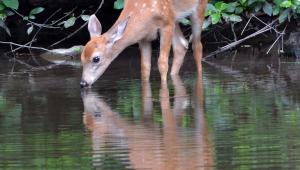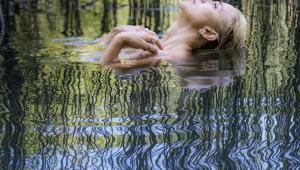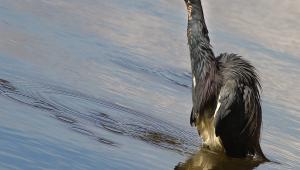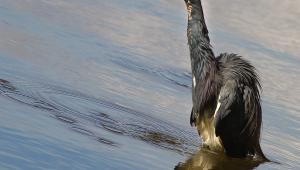AlienBees’ Ringflash; An Attractive Lighting Option
Ringflashes, or ringlights, are specialized pieces of equipment that work great in certain situations, but they're not the right choice for others. These circular units have a center-mounting bracket that allows the lens to extend through the ring of light. When the flash is triggered, light explodes around the lens, lighting up the subject somewhat like an on-camera flash. But, because there's light coming from all angles around the lens, rather than one spot like with a built-in pop-up flash or a camera-mounted external flash, stark shadows are eliminated.
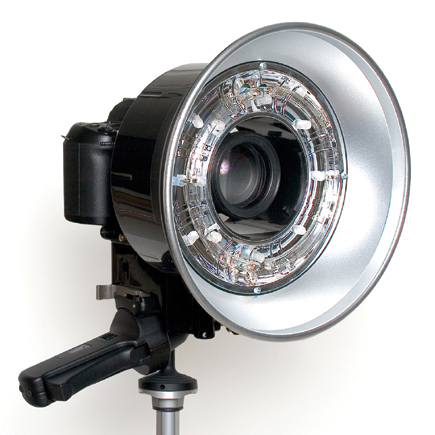 |
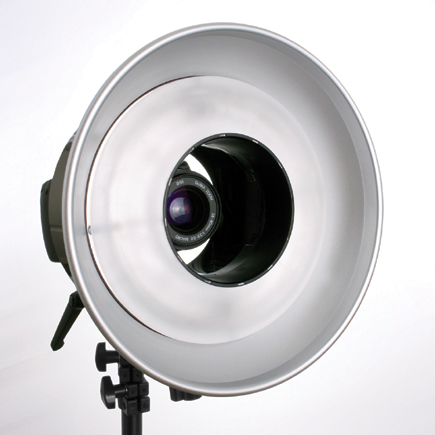 |
Ringflashes are becoming more popular all the time. Increasingly, they're
being used for attention-getting fashion photography as well as shooting interiors;
they have always been used for medical and dental documentation.
The Ringflash Advantage
Shooting with ringflashes as the only light source takes practice. Without light
diffusers or modifiers, they produce a wraparound light that envelops the subject.
One reason photographers select ringflashes is because of their ability to produce
(virtually) shadow-free images. I'm sure there must be ways of setting
the camera exposure and light power so there are absolutely no shadows, but
when playing with the ones I've used, I've noticed that they cast
a slight shadow glow. That's particularly noticeable when photographing
people.
In many cases, it's easy to tell that a ringflash was the light source.
The pictures captured with ringflashes have a very distinctive look to them--and
that's what draws some photographers to using them.
A Ringflash System
Ringlights are not only specialized, they can also be expensive, some costing
$2000 or $3000 each. Paul C. Buff's AlienBees, a company that has made
a reputation of bringing out lighting gear that is both high quality and affordable,
recently released a new ringflash, the ABR800, which consists of the flash,
a small reflector, and mounting brackets. But the ABR800 is more than a simple
ringflash. It's a lighting system, with cloth diffusers and lighting masks.
The unit measures 8" in diameter and is about 41/2" deep, and, without
accessories or attachments, weighs only about 2.5 lbs, making it light enough
for location shooting. Rather than metal reflectors and brackets, most of them
are plastic. The downside to the lightweight construction is that they're
fragile. Components have to be assembled and used carefully, to avoid potential
damage.
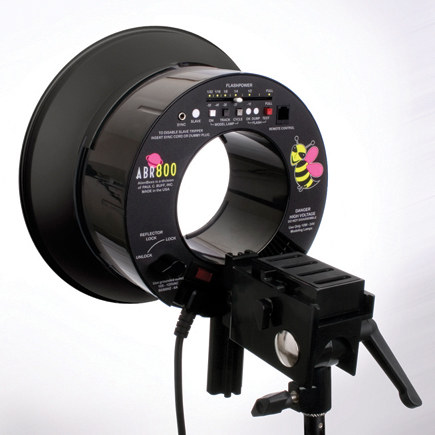 |
No separate power pack is required. The ABR800 has a built-in 320 ws power
supply. Just plug it into AC power, mount it and the unit is ready. If no AC
power is available, one option is to use the Paul C. Buff Vagabond Portable
Power System for location work.
The first inclination might be to mount it on a light stand. That's what
the instructions call for. A light stand works, but just make sure it's
a sturdy one, since it also has to hold the weight of the camera and will serve
as a shooting platform. For shooting, the camera needs to be firmly steadied.
Instead of a light stand, I used a heavy-duty tripod. That worked very well.
All the controls, from the on/off switch to the output power setting to the
modeling light control are positioned on the back of the ring. It can be triggered
through a sync cord, a slave, or remotely. The remote jack makes it possible
to utilize the flash with a wired or wireless remote, such as the company's
Radio Flash Trigger One System.
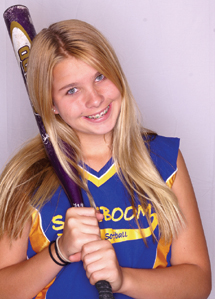 |
|
|
The ABR800, with its unique faceplate design, accepts various accessories
for specific lighting requirements. Individual components can be easily added
or removed through a versatile locking system. Unlocking the unit, which simply
means turning a knob on the back of the flash, retracts locking brackets. After
attaching the accessory or accessories, they're locked backed securely
into place. In its basic configuration, it has a plastic diffuser in front of
the light and a small reflector around it.





